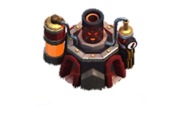Conducting a hazard analysis is an essential part of any organization or project, it helps identify potential hazards and строительство ангаров спб take steps to mitigate them, thus ensuring a safe working environment for workers, members of the public.
The first step in conducting a risk assessment is to identify the potential hazards present in the project. This involves a thorough investigation of the environment to identify any potential threats. Hazards can be electrical in nature, or they can be cumbersome equipment. It’s also essential to consider the employee compliance.
Once potential hazards have been identified, the next step is to assess the level of risk they pose. This involves evaluating the likelihood of an occurrence and the potential consequences if it does. The level of risk can be categorized as high, with high-risk situations requiring timely attention and action.
To conduct a hazard analysis, you can use a variety of approaches, including consultations or a more in-depth study involving experts from relevant fields. The most effective method will depend on the specific situation and the level of complexity involved. It’s also essential to involve stakeholders in the risk assessment process to ensure that their perspectives are taken into account.
When conducting a risk assessment, consider the following key elements:
Identify potential hazards and assess the level of risk
Evaluate the likelihood and potential results of an accident
Prioritize risks based on their level of gravity
Develop controls to reduce the risks
Monitor and review the safety audit regularly to ensure it remains relevant
Some effective tools used for hazard analysis include:
Opportunities analysis
Ishikawa diagrams or Effects diagrams
Frequency charts and diagrams
Decision trees and diagrams
Questionnaires
Effective safety protocols involves taking proactive steps to avoid incidents, as well as having a plan in place to respond quickly and effectively in the event of an emergency. By prioritizing security and conducting thorough safety audits, organizations can mitigate the risk of misfortunes and ensure a safe working environment for colleagues involved.
Remember, risk assessments are not a one-time event, but rather an ongoing process that requires regular monitoring to ensure that the risks remain under management. By following a structured approach and using a variety of tools, organizations can ensure that their hazard analyses are thorough, usable, and contribute to a safer working environment.

